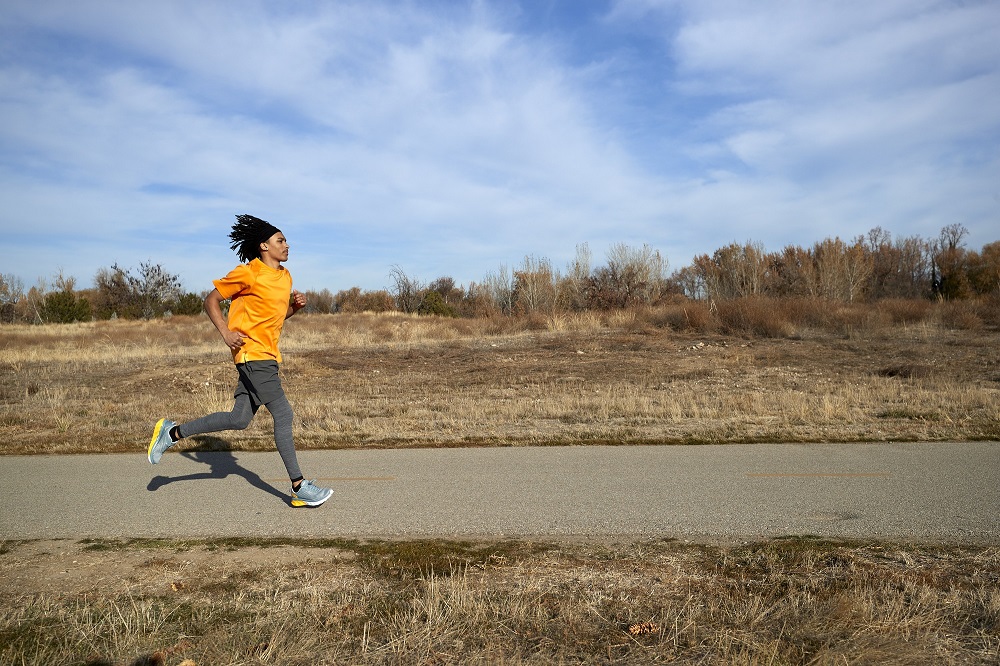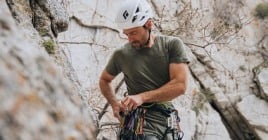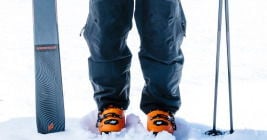For the running adaptations, confinement obliges, one adapts his running training sessions as one can by respecting the regulations, namely, 1 hour of maximum daily outing within a perimeter of 1km around his house.
Even if the playing field is more restricted and we must take precautions in terms of social distancing, this does not prevent you from going running once or twice a week, it releases a little, it airs the mind and keeps fit. Essential thing in this particular period.
While some people take on challenges that are all crazier than others: like running a marathon on a balcony or a vertical kilometre in the garden, a half marathon in a cellar. It's better to have good equipment, starting with a good pair of running shoes so you don't get hurt.
1. We help you to choose the right running shoe for you
In order to choose the right running pair, it is important to look at these different elements:
- Comfort
The first thing to take into account when choosing your running pair is the comfort of the welcome. You must immediately feel comfortable in your shoe, that the shoe fits perfectly to your foot, if you feel the slightest discomfort when trying on, the discomfort will be tenfold when you go out running.
- Cushioning
The choice of cushioning will depend on the terrain on which you practice and the duration. Generally speaking, the longer you run long distances such as marathons, the more cushioning you will need. If you only run on concrete, you also need a shock absorber to limit shocks. If you run more on well-packed paths, you need less cushioning.
- The drop
In the construction of the running shoe, the drop is the difference in height between the front and back of the foot. This is what will considerably influence the type of attack of the foot. The lower the drop of the shoe, the more you will put your foot on the front of the shoe. The higher the drop, the more you put the heel on first and then roll off. Studies show that a shoe with a low drop reduces the risk of knee injuries, whereas a shoe with a high drop will relieve the Achilles tendons.
2. Good to know when choosing your pair of running shoes
We answer the most frequently asked questions you have:
- When to change your running pair?
It all depends on how often you use your pair of running shoes. It is considered that pairs of shoes designed for long distances (marathon type) can be used between 800 and 1000 km. For the most seasoned runners, you will need to change your pair every 6 months, for some only every year.
For pairs of running shoes designed for split runs, you can use them between 500 and 800 km. Always according to its frequency, you change them more regularly because the wear is faster.
In general, you must be attentive to your feelings, sometimes you can not see visually the wear of the shoe and yet there is no more cushioning for example, if you start to feel small pains as soon as you run, it is more than time to change your pair of running shoes!!
- Do you need to choose a size in addition to your usual running shoe size?
It is indeed advisable to have more space than your daily pair of shoes, for the simple and good reason that with effort the foot tends to swell. Depending on the running brand, half a size or one size larger is necessary. To help you, there should be a thumb between your largest toe and the toe of the shoe.
- What is the difference between a pair of trail shoes and a pair of running shoes?
The biggest difference is in the sole, the pair of trail shoes will have spikes to improve grip on rough terrain while the running shoe will have a much smoother sole. It will generally be softer and lighter than a trail shoe. The pair of trail can actually have more protection on the shoe which makes the shoe a little heavier.
- What to do to avoid blisters?
The first thing is to have socks well suited to running with different reinforcements in terms of friction between the foot and the shoe. Then no mystery, you need to have the right size and the right pair of shoes for your foot. If, however, your brand new shoes give you blisters, there are specific creams to put on before your outing that work quite well!








